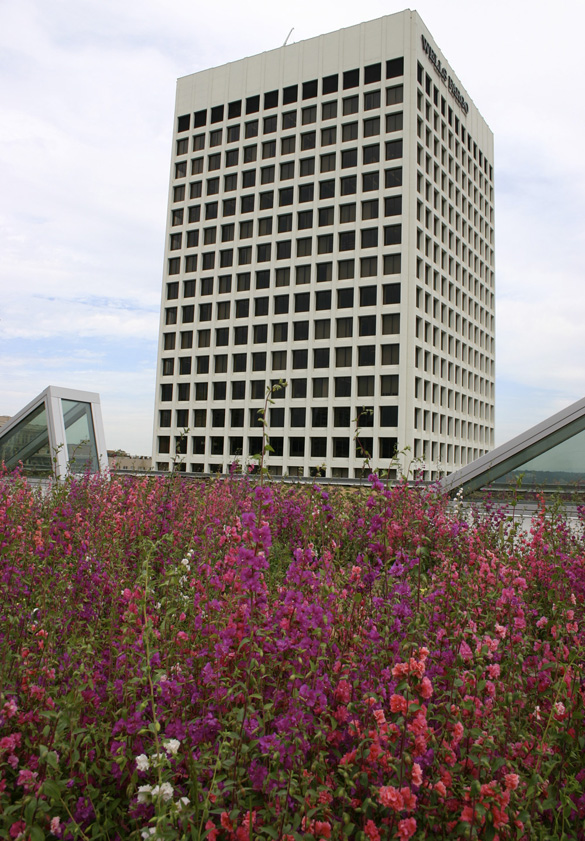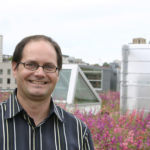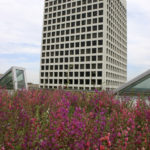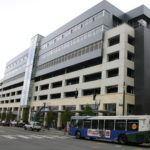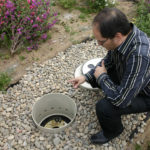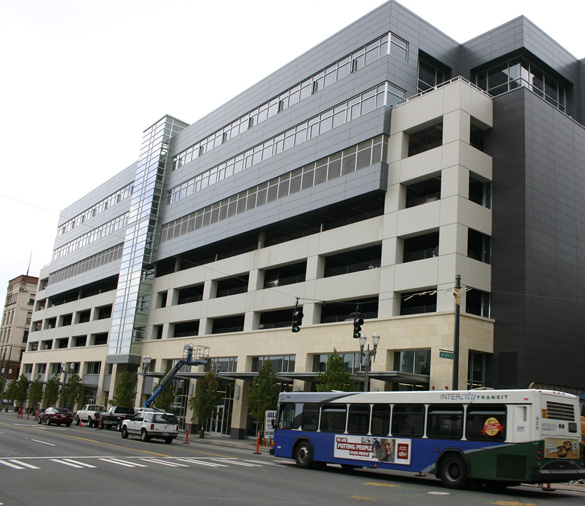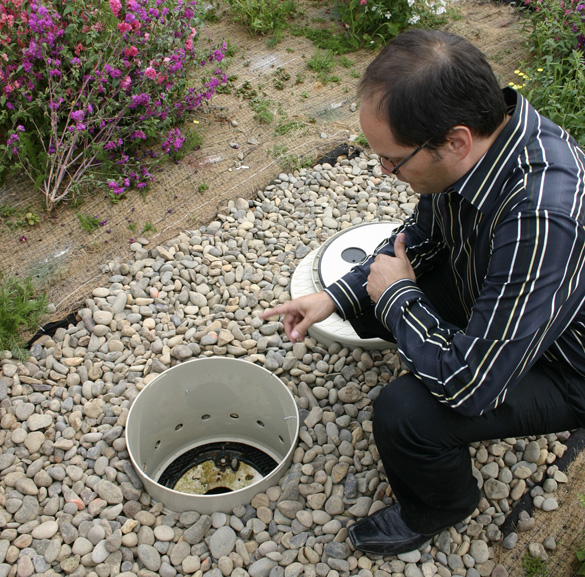It is downtown Tacoma’s hideaway. Pedestrians and motorists pass beneath it each day, unaware of its existence. But for workers in nearby office towers, the 30,000-square-foot green roof atop an eight-story building known as Pacific Plaza is downtown’s hidden gem.
No one would have complained if the green roof wasn’t included in the $30 million building. Indeed, it would have been enough to take the 40-year-old dilapidated parking garage, formerly known as Park Plaza South, and renovate it into Pacific Plaza — a building that has received much attention for its cutting-edge environmental design.
But the development team — which includes the City of Tacoma, owner and operator of the parking garage; and Pacific Plaza LLC (BLRB Architects, Dan Putnam of PCS Structural Solutions, and Absher Construction), which owns and operates retail and office space — decided to do more.
The biggest example of this commitment is the green roof.
During a recent visit, bees darted in and out of tall purple flowers that thrived under ample sunlight, a unique irrigation system, and a new Tagro product specifically designed for the green roof. The city’s usual sounds — obnoxious honks of impatient drivers, labored groans of Pierce Transit buses, and the hum of mechanical systems from nearby office buildings — were suddenly strange when surrounded by nature. The contrast will be greater in 18 months, when the hair-like coconut husks that now protect the seedlings against wind and heat will degrade, and the roof will be a sprawling meadow.
Yesterday, the Tacoma Daily Index focused on the overall project and spoke with BLRB Architects Senior Associate Dave Pool about the building design and the firm’s new headquarters at Pacific Plaza. Today, we speak with BLRB Architects Associate Ben Ferguson about the green roof.
TACOMA DAILY INDEX: What factors contributed to including a green roof in the Pacific Plaza project?
BEN FERGUSON: The City of Tacoma sent us research they saw in Engineering News-Record about the performance of green roofs. That changed the paradigm to being something where both the city and the development team saw it as a net benefit. The biggest thing that allowed this to happen was City of Tacoma Environmental Services came to the table with an idea to use their Tagro product as the growing medium for this roof. They saw this as an opportunity to make a new market for Tagro. They offered to develop a soil mix using Tagro that met the standards of the green roof distributor. As you can see, it’s doing quite well. I think the city’s goal is to turn their Tagro product into a profit center to make better use of the city’s use of resources. It’s a win-win for everybody.
INDEX: What are the benefits of having the green roof?
FERGUSON: There are a lot of variables.
First, the green roof creates a micro-climate, which makes it a lot cooler on the roof’s surface than a normal building. Our building doesn’t take heat on the roof like a normal building. That means our energy use is lower.
Also, cities are a lot warmer than the environment around them because of so much heat-sinking material. By having green roofs, you start to defray some of that and you start taking away that problem. If all new buildings had green roofs, over time that heat-sink problem in cities would be gone. This is an incremental step.
The third part deals with water. The stormwater system in the city goes straight into Thea Foss Waterway. Before, this parking garage was basically a surface lot and all the grease and gunk would go into the drains and right into the Foss. So people are out there cleaning it up, and it was just being polluted all the time. Our goal is for as little water as possible to make its way into the stormwater system.
INDEX: Describe the innovative irrigation system.
FERGUSON: All the water for the green roof [is provided by a] drip irrigation system. That system runs multiple times during the day, a couple times a week. The point is to keep the dirt saturated. Whatever is left over drains into the cistern underneath the walkway area [adjacent to this building]. There are 190,000 gallons that go into that cistern [Editor’s Note: The cistern is a former underground Turkish bath that was discovered during the building renovation]. That water is then pumped back to the roof to irrigate the green roof. Also, our toilets and urinals are flushed with that same water. So we are taking the water that used to mix with all the gas and oil and went into Thea Foss Waterway and now storing it, flushing toilets with it, flushing urinals with it, and irrigating the green roof.
We don’t know yet how much of the total water we collect will stay on-site. Our estimate is that from September through February, no water will leave the site. We think we’re going to fill up the cistern in February. From February to April, it will be overflow, just as it always would be. From April to September, we’ll be irrigating so much that we’ll be using more water than we take on. We’re hoping we’ll run out of water and start over again in October. What’s neat about this is it’s a closed loop. The more we can water, the more water we get rid of and the less that goes into the stormwater system.
INDEX: How much of a factor was the green roof in terms of pursuing LEED Platinum certification for the project?
FERGUSON: Initially, we wanted to become a LEED Silver building. It turned out we were able to do that quite easily. As we were going, we felt like there was a huge opportunity to go way further than LEED Silver because the building kind of lent itself to more sustainable methods. But it just wasn’t in our budget. As a team, we wrestled with it for a while and determined that if we all came together we could set a higher level. We were almost LEED Gold without the green roof. The green roof put us solidly into a high level of gold — almost to platinum. The cistern came later. We realized what an asset we had right next to us. Once we realized the cistern was possible, it put us solidly into LEED Platinum. That is the highest. It’s a standard we’re proud to have met.
Todd Matthews is editor of the Tacoma Daily Index and recipient of an award for Outstanding Achievement in Media from the Washington State Department of Archaeology and Historic Preservation for his work covering historic preservation in Tacoma and Pierce County. He has earned four awards from the Society of Professional Journalists, including third-place honors for his feature article about the University of Washington’s Innocence Project; first-place honors for his feature article about Seattle’s bike messengers; third-place honors for his feature interview with Prison Legal News founder Paul Wright; and second-place honors for his feature article about whistle-blowers in Washington State. His work has also appeared in All About Jazz, City Arts Tacoma, Earshot Jazz, Homeland Security Today, Jazz Steps, Journal of the San Juans, Lynnwood-Mountlake Terrace Enterprise, Prison Legal News, Rain Taxi, Real Change, Seattle Business Monthly, Seattle magazine, Tablet, Washington CEO, Washington Law & Politics, and Washington Free Press. He is a graduate of the University of Washington and holds a bachelor’s degree in communications. His journalism is collected online at wahmee.com.
